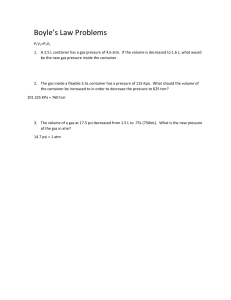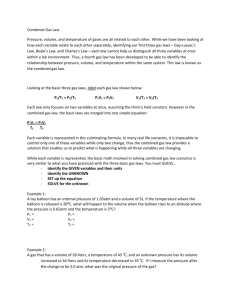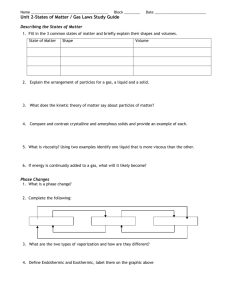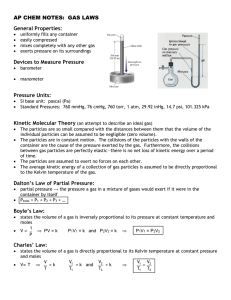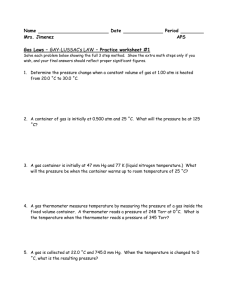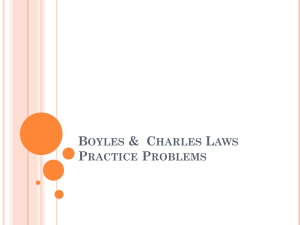Homework sheet for Sept 12
advertisement
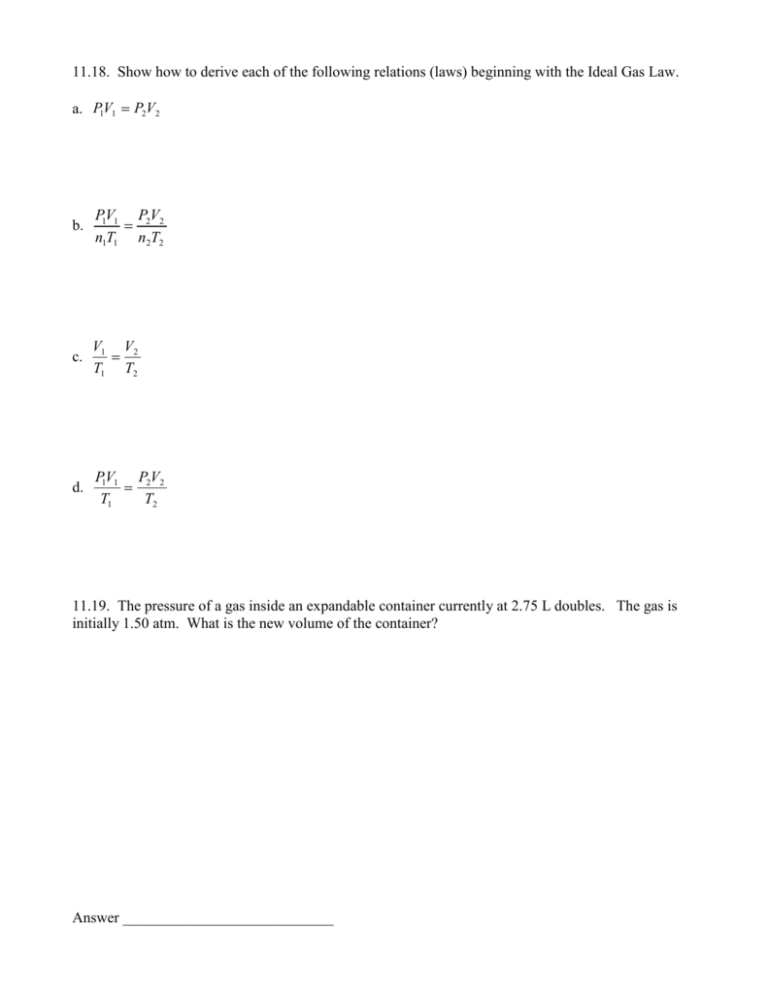
11.18. Show how to derive each of the following relations (laws) beginning with the Ideal Gas Law. a. P1V1 P2V2 b. P1V1 n1T1 P2V2 n2T2 c. V1 T1 d. P1V1 T1 V2 T2 P2V2 T2 11.19. The pressure of a gas inside an expandable container currently at 2.75 L doubles. The gas is initially 1.50 atm. What is the new volume of the container? Answer ____________________________ 11.20. A soda bottle is filled with air at 756 torr at 17.2 oC. Suppose the bottle cap will pop off when the pressure inside the bottle reaches 1.42 atm. The bottle of gas is then heated. At what temperature in oC will the bottle cap pop off? Answer ___________________________ 11.21. At sea level, a balloon is filled to 1.42 L at 0.994 atm and 19.7 oC and brought into a small plane. When the plane reaches 8500 ft, the temperature is 17.1 oC; and the volume of the balloon is determined to be 1.91 L. What is the pressure? Answer ____________________________ 11.22. The pressure of N2 in a container is 456 torr while the pressure of the O2 also in the container is 142 torr. What is the total pressure? Also, what are the percent N2 and percent O2? Answer: Ptot. = %N2 = %O2 = 11.23. A 15.0 L vessel is filled with 0.230 moles of He and 0.155 moles of O2 at 21 oC. In atmospheres, what are the partial pressures of He and O2 and what is the total pressure? Answer: PHe = PO2 = Ptot. = 11.24. A mixture of O2 and N2 contains a partial pressure of 1.25 atm of O2 and a total pressure of 2.30 atm. The total number of moles is 2.00. What are the mole fractions of O2 and N2? How many moles of O2 and N2 are in the container? Answer: XO2 = XN2 = nO2 = nN2 =
